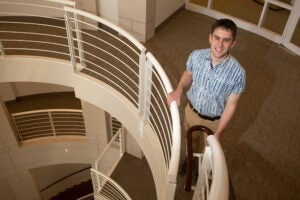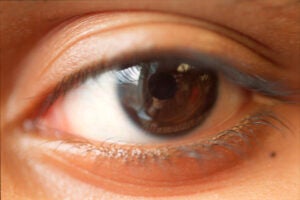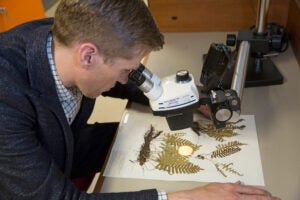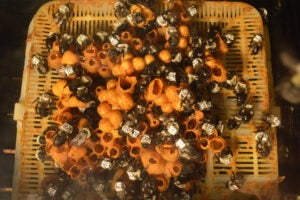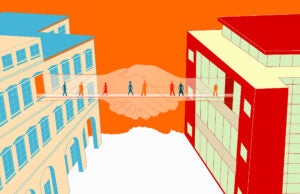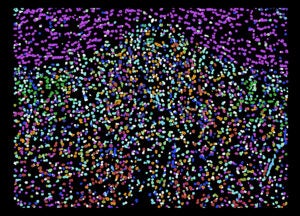Tag: Faculty of Arts and Sciences
-
Nation & World
Brainy birds
A new study shows that African grey parrots can perform some cognitive tasks at levels beyond those of 5-year-old humans. The results not only suggest that humans aren’t the only species capable of making complex inferences, but also point to flaws in a widely used test of animal intelligence.
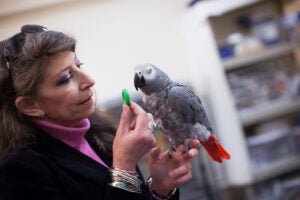
-
Nation & World
The impact of ocean acidification
In a first-of-its-kind study, findings suggest that continued ocean warming and acidification could impact everything from how fish move to how they eat.
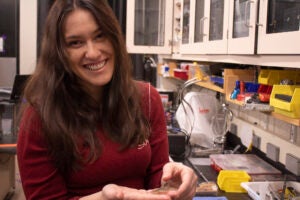
-
Nation & World
And now, land may be sinking
A new study, which used everything from tide gauges to GPS data to paint the most accurate picture ever of sea-level rise along the East Coast of the U.S., is suggesting that in addition to rising seas, communities along the coast may also have to contend with the land sinking.
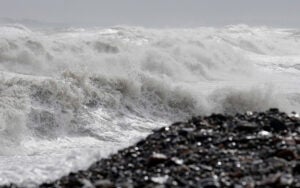
-
Nation & World
Solving colibactin’s code
In an effort to understand how colibactin, a compound produced by certain strains of E. coli, may be connected to the development of colorectal cancer, Harvard researchers are exploring how the compound damages DNA to produce DNA adducts.
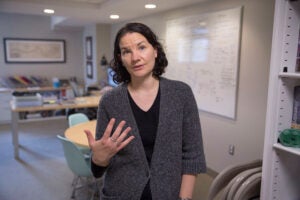
-
Nation & World
How to navigate the gender landscape at work
Stephanie Huckel, senior global program manager of diversity and inclusion at IGT, offered insight and advice during a Faculty of Arts and Sciences Diversity Dialogue titled “Achieving Greater Workplace Equity for LGBTQ Employees.”
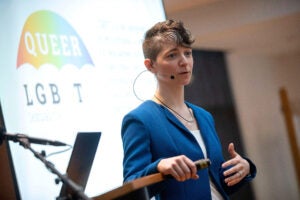
-
Nation & World
Rapid evolution, illustrated
A study in which mice were released into outdoor enclosures to track how light- and dark-colored specimens survived confirms that mice survive better in similarly colored habitats, providing insights into evolution.
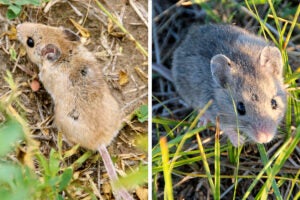
-
Nation & World
Microbial manufacturing
Emily Balskus and a team of researchers untangled how soil bacteria are able to manufacture streptozotocin, an antibiotic and anti-cancer compound.
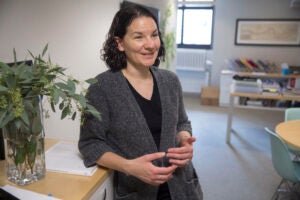
-
Nation & World
Spending dips on health care for the Medicare elderly
Health care spending among the Medicare population age 65 and older has slowed dramatically since 2005, and as much as half of that reduction can be attributed to reduced spending on cardiovascular disease, a new Harvard study has found.
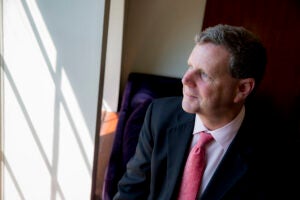
-
Nation & World
Looking at lunglessness
A recent study shows that a gene that produces surfactant protein c — a key protein for lung function — is expressed in the skin and mouths of lungless salamanders, suggesting it also plays an important role for cutaneous respiration.
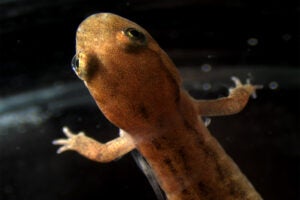
-
Nation & World
Researcher finds Coke’s fingerprints on health policy in China
Coca-Cola worked through the Chinese branch of a U.S.-based nonprofit to influence anti-obesity measures in China, according to new research by Harvard Professor Susan Greenhalgh.
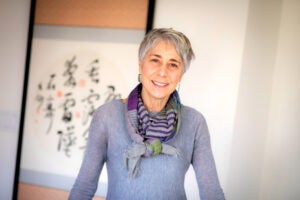
-
Nation & World
The mystery of the medicine man
A paper published earlier this year argues that shamanism develops as specialists compete to provide magical services to people in their communities, and the outcome is a set of traditions that hacks people’s psychological biases to convince them that they can control the uncertain.
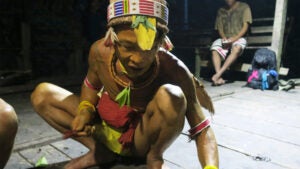
-
Nation & World
Life, with another ingredient
In a paper published in PNAS, Jack W. Szostak, professor of chemistry and chemical biology at Harvard, along with graduate student Seohyun (Chris) Kim, suggest that RNA could have started with a different set of nucleotide bases. In place of guanine, RNA could have relied on a surrogate, inosine.
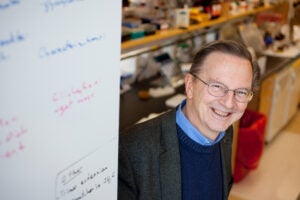
-
Nation & World
Replacing hard parts in soft robots
Harvard scientists have created a soft valve that could replace “hard” valves and lead to the creation of entirely soft robots. The valve’s structure can also be used to produce unique, oscillatory behavior.
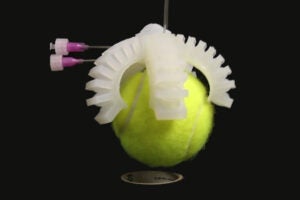
-
Nation & World
Reading teeth
By examining the teeth of Neanderthal infants, a team of researchers was able to glean insight into nursing and weaning behavior as well as winter and summer cycles. The study even found evidence that the Neanderthals had been exposed to lead — the earliest such exposure ever recorded in any human ancestor.
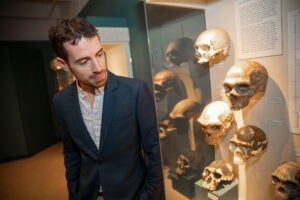
-
Nation & World
How mammals grew diverse
Using a detailed, musculoskeletal model of an echidna forelimb, Harvard scientists are not only shedding light on how the little-studied echidna’s forelimbs work, but also opening a window into understanding how extinct mammals might have used those limbs.
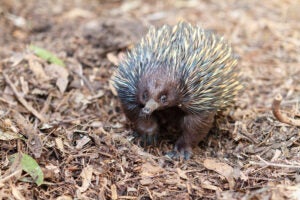
-
Nation & World
Christopher Stubbs named dean of science
Christopher Stubbs, the Samuel C. Moncher Professor of Physics and of Astronomy, has been appointed dean of science by FAS Dean Claudine Gay.
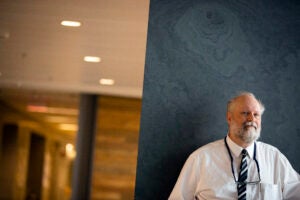
-
Nation & World
Much to be thankful for
Giving Thanks Open House allows Harvard community to share its message among colleagues and support the Harvard Square Homeless Shelter.
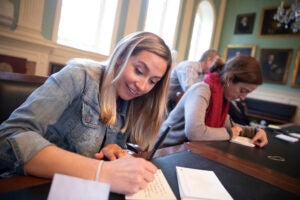
-
Nation & World
Something weird this way comes
A paper by Harvard researchers wonders whether the interstellar object known as “‘Oumuamua” is a visitor from an alien civilization.
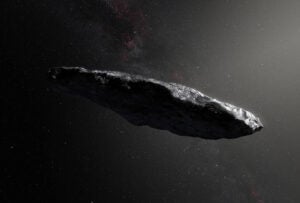
-
Nation & World
Fish teeth mark periods of evolution
Based on close examination of thousands of fossilized fish teeth, a Harvard researcher found that, while the asteroid impact that killed off the dinosaurs did lead to the extinction of some fish species, it also set the stage for two periods of rapid evolution among marine life.
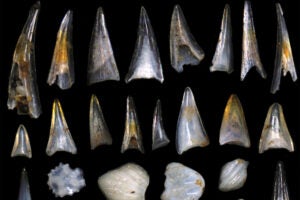
-
Nation & World
Harvard’s quantum leap
By pairing quantum science exploration with solution-driven quantum engineering the new Harvard Quantum Initiative, aims to raise the bar across higher education, industry, and government research to progress quantum science and engineering and educate the future workforce.
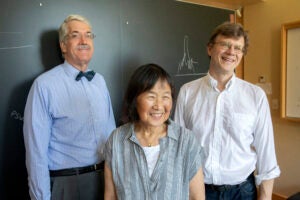
-
Nation & World
Turning tide on greenhouse gases
Emissions from power plants and heavy industry, rather than spewing into the atmosphere, could be captured and chemically transformed from greenhouse gases like carbon dioxide into industrial fuels or chemicals thanks to a system developed by Harvard researchers.
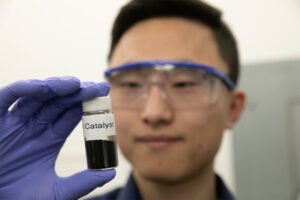
-
Nation & World
Seeing cell membranes in new light
Harvard’s Adam Cohen is the lead author of a new study that challenges conventional theories about the fluid nature of cell membranes and how they react to tension.
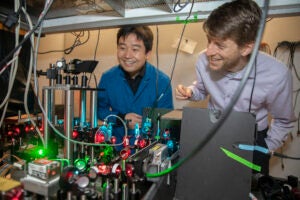
-
Nation & World
Electrons, up really close
Working in a basement lab at Harvard, a group of researchers led by John Doyle, the Henry B. Silsbee Professor of Physics, have been part of a team making the most precise measurement of the shape of the field around an electron. The results suggest that some theories for what lies beyond the standard model…
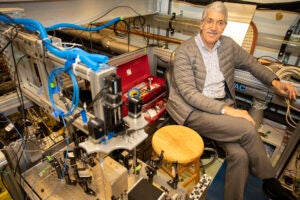
-
Nation & World
A measure of success for groundwater storage
A recent study used seismic noise to measure the size and water levels in underground aquifers, focusing on California’s San Gabriel Valley aquifer, which had to meet the demands of 1 million people during a five-year drought.
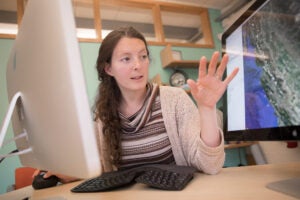
-
Nation & World
Racial and economic disparities intertwined, study finds
While African-Americans have moved to higher ranks on the income distribution scale in the decades since the Civil Rights Movement, those improvements have largely been blunted by rapid income growth for the richest members of society and income stagnation among lower- and middle-income families.
